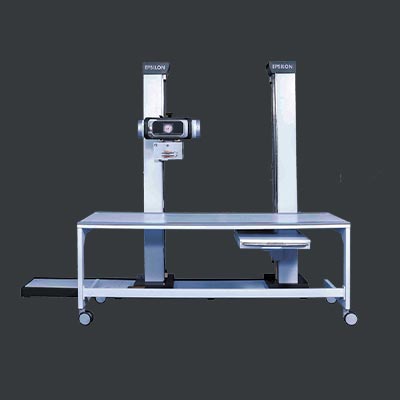In the rapidly evolving landscape of medical diagnostics, Digital X-Ray technology has emerged as a revolutionary force, transforming the way healthcare professionals visualize and analyze internal structures. This article delves into the intricacies of Digital X-Ray, exploring its performance, diverse applications, and the myriad advantages it brings to the realm of medical imaging.
What is Digital X-Ray ?
Digital X-Ray, often referred to as computed radiography or digital radiography, is a modern imaging technology that replaces traditional film-based X-rays with electronic sensors. This innovation captures X-ray images in a digital format, allowing for immediate acquisition, storage, and manipulation.
How Digital X-Ray Performs
Digital X-Ray systems utilize electronic detectors, such as amorphous selenium or cesium iodide, to capture X-ray photons that pass through the body. These detectors convert the X-ray energy into an electrical signal, which is then processed and transformed into a high-resolution digital image. The absence of film development time streamlines the imaging process, providing quicker results for both patients and healthcare providers.

What are the uses of X-Ray ?
Medical Diagnostics
Digital X-Ray finds extensive use in various medical disciplines, aiding in the diagnosis of skeletal and soft tissue abnormalities. Its ability to produce detailed images of bones, joints, and internal organs makes it indispensable in identifying fractures, infections, tumors, and pulmonary conditions.
Dental Imaging
Dentistry has also embraced Digital X-Ray for capturing detailed images of teeth, gums, and surrounding structures. The reduced radiation exposure and immediate image availability enhance patient care in dental practices.
Orthopedics
In orthopedic settings, Digital X-Ray facilitates precise evaluation of joint conditions, arthritis, and musculoskeletal disorders. Real-time imaging supports interventional procedures, contributing to improved patient outcomes.
Emergency Medicine
The speed of Digital X-Ray is crucial in emergency situations, providing rapid insights into injuries like fractures and pneumothorax. Quick diagnostic turnaround is paramount for timely and effective treatment.
Advantages of Digital X-Ray
Reduced Radiation Exposure
Digital X-Ray systems typically require lower radiation doses compared to traditional film-based methods, ensuring patient safety without compromising diagnostic quality.
Enhanced Image Quality
The digital format allows for manipulation of images, improving visibility and enabling healthcare professionals to zoom in on specific areas for a more detailed analysis.
Swift Image Acquisition
Immediate image availability expedites the diagnostic process, enabling faster decision-making and treatment planning.
Efficient Data Storage and Retrieval
Digital X-Ray images can be stored electronically, eliminating the need for physical storage space. This facilitates easy retrieval, sharing, and long-term archiving of patient data.
Environmentally Friendly
The elimination of film processing chemicals and reduced energy consumption contribute to a more environmentally sustainable imaging solution.
Digital X-Ray stands as a testament to the continuous evolution of medical imaging technologies. Its exceptional performance, versatile applications, and numerous advantages position it at the forefront of modern diagnostic practices, enhancing the efficiency and accuracy of healthcare delivery.
